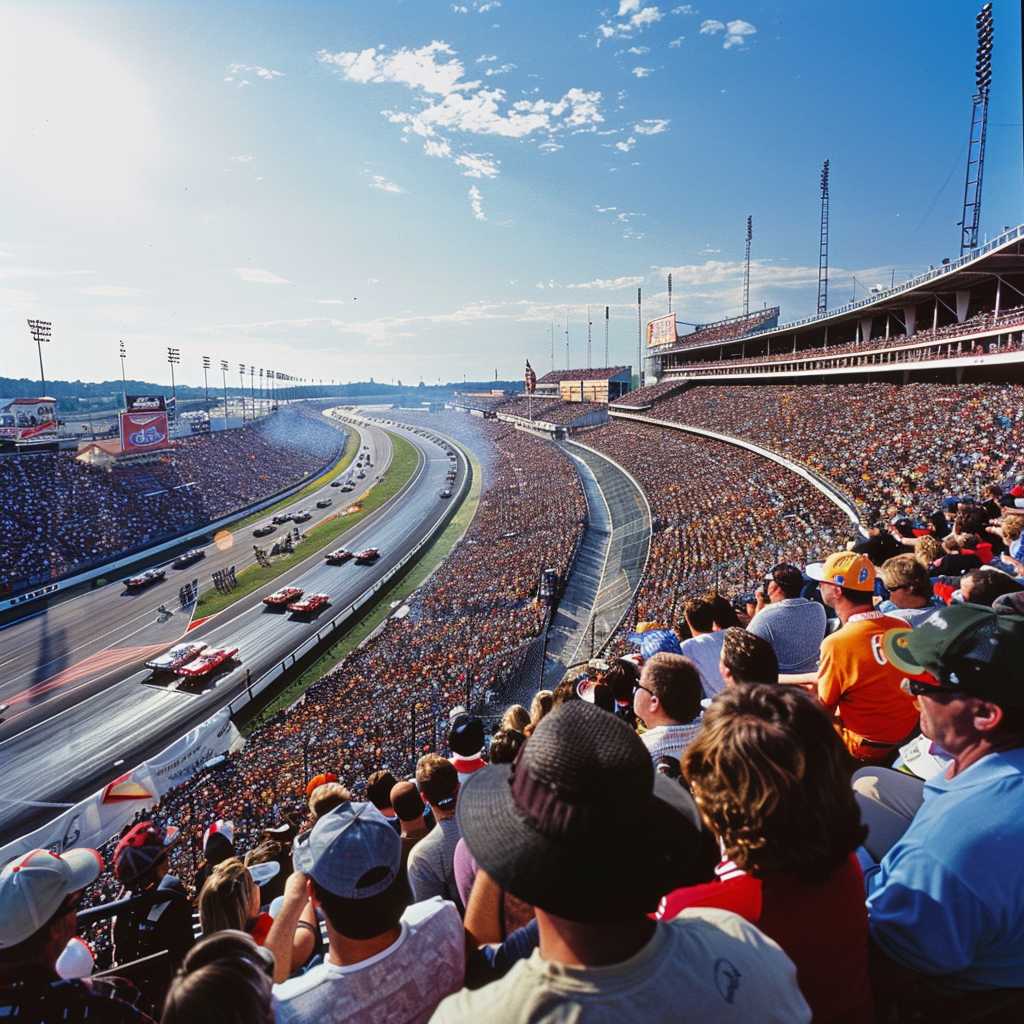The Legacy and Thrills of Martinsville Speedway: NASCAR’s Connection to Racing History
Martinsville Speedway stands as one of the most storied racetracks in NASCAR history. Nestled in the rolling hills of Martinsville, Virginia, this speedway has been a staple of stock car racing since its inception and remains a favorite among both drivers and fans for its unique characteristics and the rich racing heritage it perpetuates.
An Introduction to Martinsville Speedway’s Storied Past
Martinsville Speedway is the oldest track on the NASCAR Cup Series circuit. Since its first race in 1947, the speedway has hosted countless events and has been revered for maintaining many of its original features despite advancements in the motorsport over the years.
Clay Earles founded the track as a dirt track with room for 750 spectators. Notably, it was one of the first of what would be known as NASCAR’s “Charter Tracks”. In order to accommodate faster speeds and to give competitors a more consistent surface, Earles paved the track in 1955. The speedway has risen from these humble beginnings to become emblematic of classic American stock car racing. The way it has succeeded to retain much of its early charm amidst the changing face of NASCAR is often cited by racing enthusiasts as a testament to its timeless appeal.
The Paperclip: A Unique Layout for Close Racing
One aspect of Martinsville that sets it apart from other NASCAR circuits is its shape: often referred to as “the paperclip”. With tight turns and short straights, the track is just over half a mile in length, making it the shortest track on the NASCAR circuit. Its configuration presents unique challenges to drivers, who must balance acceleration and braking while navigating through close quarters—ensuring exciting races filled with skillful maneuvering. The layout has remained effectively unchanged, which allows race goers today to share an experience not unlike that of audiences from decades prior.
The flat banking and narrow stretches make passing difficult, force drivers into aggressive tactics, and have historically resulted in some of the sport’s most dramatic and memorable races. Punishing on both vehicles and drivers alike, Martinsville is respected for testing the durability of cars and the strategic thinking of those behind the wheel.
Notable Races and Iconic Moments at Martinsville Speedway
Over the years, Martinsville Speedway has been home to many remarkable races that have contributed to NASCAR lore. Perhaps most famous among them is Richard Petty’s record-setting 15th career victory at Martinsville in 1971, securing his place as “The King” in the hearts of many fans.
Moreover, Martinsville’s races are known for intense confrontations between drivers both on and off the track. From heated rivalries boiling over into post-race altercations to last-lap passes that have left crowds in awe, this speedway has consistently provided some of NASCAR’s most gripping storylines.
The track also hosts two annual NASCAR Cup Series races: The Blue-Emu Maximum Pain Relief 500 in the spring and the Xfinity 500 in the fall—the latter often plays a pivotal role in determining progression within the NASCAR playoffs, adding an extra layer of intensity to each contest.
Modern-Day Martinsville: Advancements and Preservation
While honoring its storied past, Martinsville Speedway has made considerable upgrades to improve the fan experience without compromising what fans love about this historical track. Noteworthy advancements include LED lighting for night races—making Martinsville Speedway home to NASCAR’s first permanent LED lighting system—and improved seating facilities.
Efforts have also been directed towards better technology to enhance garages and pit areas for race teams—a balancing act between modern efficiency and historical authenticity that is constantly overseen by current owners and operators.
Notes
Image Description
The image depicts a panoramic view of Martinsville Speedway during a race day filled with action, showcasing its signature paperclip shape as cars blaze down one of the short straights towards a tight corner. Crowds fill the stands, some standing up caught amidst waves of excitement as drivers jostle for position on the historic track below.
